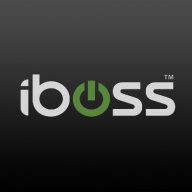


AWS IAM Identity Center and JumpCloud compete in the identity and access management category. AWS IAM Identity Center tends to lead in resource-based management and security, while JumpCloud has an edge in user and device management.
Features: AWS IAM Identity Center is known for centralized access management, pre-existing permission templates, and role-based permissions. Its granular access control ensures precise resource management, supported by JSON-based policies and multi-factor authentication. JumpCloud offers robust device management, single sign-on features, and seamless integration with platforms like Microsoft 365 and Google Workspace. It supports SAML 2.0 for broad system integration and provides users with exceptional flexibility in managing authentication and device policies.
Room for Improvement: AWS IAM Identity Center needs to improve third-party tool integration and enhance security policy visualization. Issues like duplicate group names and complex user management in large environments require attention. JumpCloud could benefit from improved group synchronization with Microsoft 365, enhanced multi-tenant features, and better device control for non-Mac/Linux devices. There's also a need to integrate with other platforms, enhance API reliability, and develop advanced conditional access policies.
Ease of Deployment and Customer Service: Both AWS IAM Identity Center and JumpCloud are mainly deployed in public cloud environments, with JumpCloud also supporting hybrid models. AWS offers extensive documentation and self-service resources, though user interaction with support is minimal. In contrast, JumpCloud is favored for its simplicity and wide range of support options, making direct customer assistance more accessible.
Pricing and ROI: AWS IAM Identity Center offers cost-effectiveness through free basic services and pay-as-you-go pricing for advanced features, delivering a strong ROI by enhancing operational efficiency and security. JumpCloud, despite recent price changes, remains affordable for startups and SMBs with flexible pricing based on user needs. By eliminating the need for additional hardware, JumpCloud is praised for straightforward pricing and affordability. AWS targets businesses focused on AWS-centric IAM solutions, whereas JumpCloud's pricing appeals to those needing extensive user and device management capabilities.



iboss offers a comprehensive security platform designed for diverse use cases such as web filtering, data loss protection, corporate proxy services, and URL filtering.
iboss integrates advanced features to address dynamic security needs, leveraging its strength in SASE, ZTNA, AI initiatives, and cloud integration, while ensuring seamless operations for remote work. It excels in historical forensics, malware protection, and flexible cloud deployments. Users benefit from comprehensive traffic scanning, robust malware detection, and PaaS capabilities that reduce hardware management. An intuitive admin console ensures efficient management with content filtering and low false positives. SSL decryption enhances security, while DLP protects data in AI conversations. Deployment is rapid and scalable, allowing effortless integration with emerging technologies.
What features does iboss offer?
What benefits and ROI should users consider?
iboss finds significant application in sectors such as education, where web filtering for K-12 is crucial, and in corporate environments requiring robust proxy services and URL filtering for network security. Its adaptability is essential in scenarios demanding flexible, decentralized security frameworks, particularly for remote work setups.
AWS IAM Identity Center is the recommended service for managing your workforce's access to AWS applications or your multiple AWS accounts (or both). It is a flexible solution that can be used to connect your existing identity source or help you create users in AWS. IAM Identity Center can be used alongside your existing AWS account access configurations.
JumpCloud enables organizations to manage devices, users, and applications across platforms like Windows, Mac, Linux, iOS, and Android. It offers centralized authentication, identity and access management, single sign-on, directory services, security policy enforcement, and cloud service integration.
Organizations leverage JumpCloud for its robust device management, policy management, and seamless integration with applications such as Microsoft 365 and Google Workspace. Its flexibility, stability, scalability, and ease of use make it a strong choice for managing business directories, executing scripts on-demand, synchronizing system access, and implementing mobile device management. Key features include remote access, Windows Out of Box Experience, strong authentication and authorization controls, centralized user and device management, efficient onboarding and offboarding processes, and extensive security and reporting features.
What are the most important features?In specific industries, JumpCloud is utilized to manage a wide array of tasks such as automating administrative functions in healthcare, ensuring secure access to sensitive data in finance, and supporting remote work needs in technology sectors. Its ability to integrate with diverse platforms and provide centralized control makes it suitable for managing complex IT environments.
We monitor all Single Sign-On (SSO) reviews to prevent fraudulent reviews and keep review quality high. We do not post reviews by company employees or direct competitors. We validate each review for authenticity via cross-reference with LinkedIn, and personal follow-up with the reviewer when necessary.